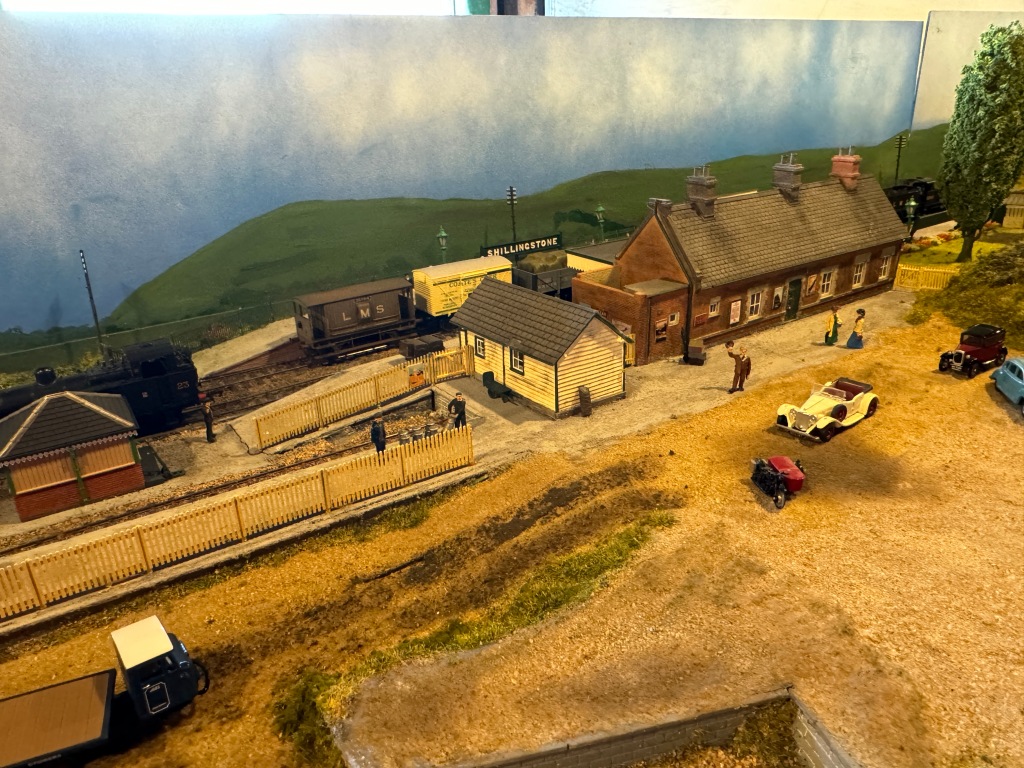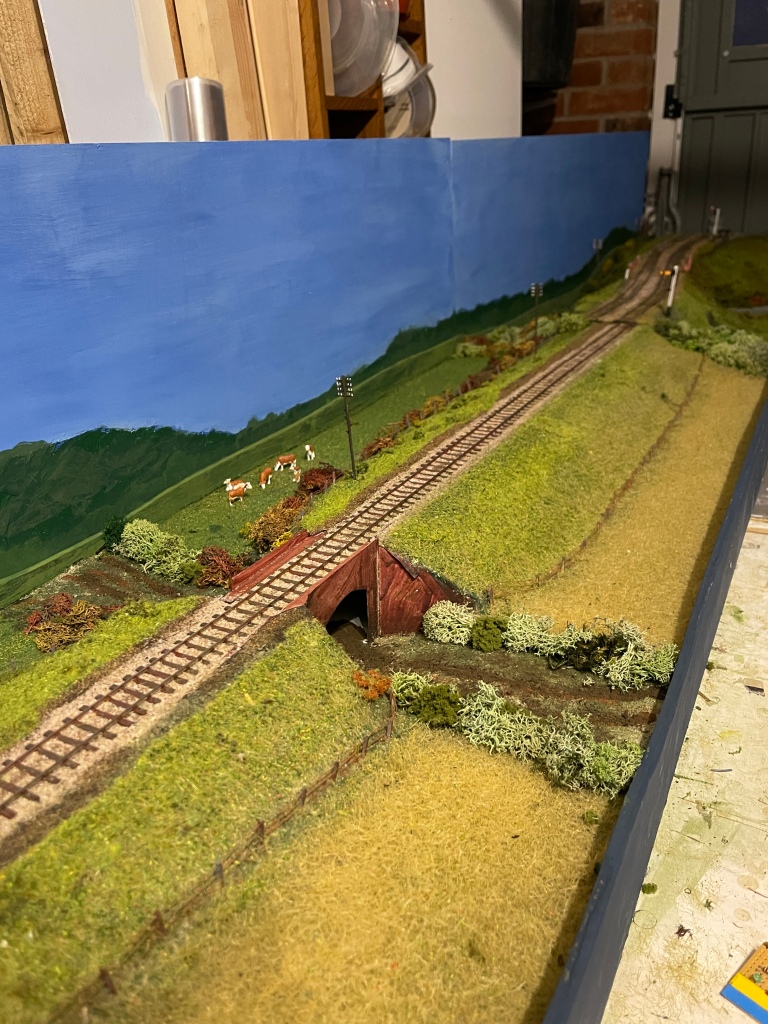The layout is based on the station on the S&DJR in Dorset. Its OO scale (4mm to the foot) with 24 Feet by 1.5-2feet of scenic area covering north and south of the station, The layout covers from Raglans Drove Br178, Cattle Creep Br179, Haywards Land Br180 to Hackers Land Br182. Five road Fiddle yards are at each end each of 6ft in length providing for up to 5 coach trains. The layout includes the station and yard area. Points and Signals are controlled by a DCC and it uses DCC Train control with some sound-fitted locomotives. The station buildings are from Bachmann. The pictures are all from the test setup in the garden.


Design Principles
Build a OO layout for the first time based on utilising the Bachman Buildings in a way that would allow the layout to be operated across a variety of era’s. The major challenge is that the goods shed was planned and not built and by the 1960’s there were a number of provender sheds in that location but no shed 😦
The Bachmann buildings are a mixture of what has been photographed in the 50’s -60’s along with the restored station as it is now. Looking back at the photos and records its clear that the buildings didnt change that much from when they were built until the railway closed in 1966. Assuming that the things that set the time for viewers are the Stock, People (clothing) and the Vehicles then changing these allows the periods to be extended.
History
The S&D came under the control of the LMS in 1930 and at this point, the existing S&DJR Blue livery was phased out on both coaches and engines. Running before 1930 becomes a little problematic and I need to check when the various engines were bought into service but assume I could potentially go back to the Great War (1914-18) and run some other stock from different companies in this period.


Post 1930 the line came under joint control of the SR for the lines and buildings and the LMS for the engines and coaches. The LMS appeared to have moved fairly quickly to replace all of the older S&DJR coaches from Highbridge and I assume started to use LMS period 1 coaches. Many of the S&D locomotives stayed on the line but were repainted, I assume over a period of time into the LMS Livery of plain and lined black.
During WW2 (1939-45) there are a number of records again of lots of different engines and coaches running over the line.
The next transition period is Nationalisation in 1948. The LMS Livery engines and coaches being replaced by BR early period and blood and Custard coaches. The engines and coaches remain the same but maybe some BR MK1’s start to creep into the mix
In 1956 BR changed again moving to the late emblem on the engines and back to Maroon and for SR stock green for coaches. There are lots of colour photos’ of this period.
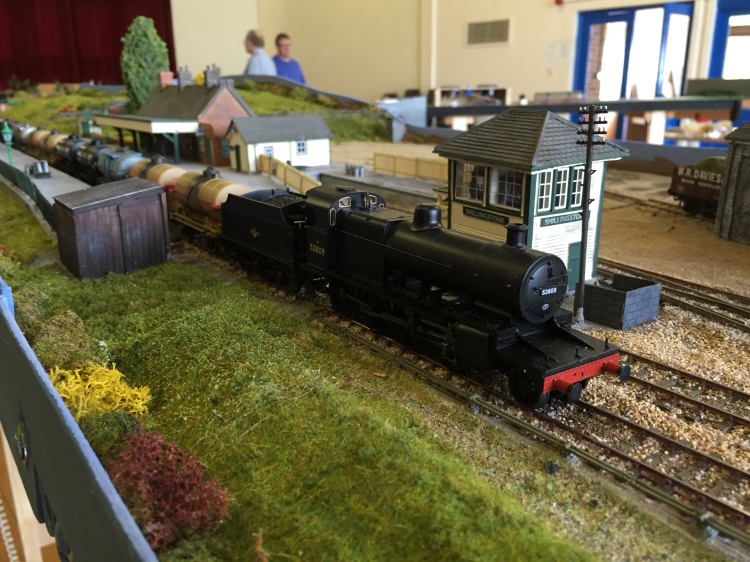
Three operating period summary
Early Period – 1915 – 1935 – SDJR Blue, LMS Black and Red coaches
Middle Period – 1940-1955 – LMS Black -Red – BR Early Emblem Blood and Custard
Late Period – 1955-1966 – BR early Emblem- Late Emblem Maroon and Green
Vehicles
Early Period – Mainly Horse Drawn, Some Steam – Very Early Cars/Lorries
Middle Period – Still Horses – Early cars and Lorries
Late Period – Cars and Lorries up to the middle of the 1960’s
Early Period
The Layout has been set in the early period with all of the stock, vehicles and people fitted to represent this time. At the moment the earliest locomotives are the 7F’s with 3F, 4F, 1P, 2P types represented in mix of S&DJR and LMS liveries

North Dorset Railway
Shillingstone station is an established heritage railway location with plans to eventually run trains through to Sturminster Newton one station up the line. The buildings are fully restored track laying to Haywards Lane Bridge is underway and the NDR are planning to start with Brake van rides on the site in 2026
The North Dorset Railway can be found on Facebook and the website by clicking the buttons below
Layout Research
The research has taken me to Shillingstone a number of times and also had me scouring the internet for images. I don’t have a provenance for this image but it shows the relatively timeless look when compared with the pictures taken on-site linked below

The layout Extension Build and Operation

Extension Build
The layout has been extended and tweaked to enable it to fit inside a Railway Wagon for display and operation. The overall length is now 34 Feet with 24 Feet of scenic track and a 5 foot, 5 road fiddle yard at each end of the model. The 6 scenic boards pack face to face in pairs for transport and storage. The build took place in the garage and some of the pictures of this are shown in the gallery below. The boards were built with open frames with cardboard formers covered in papier mache and polystyrene-covered plaster bandage,
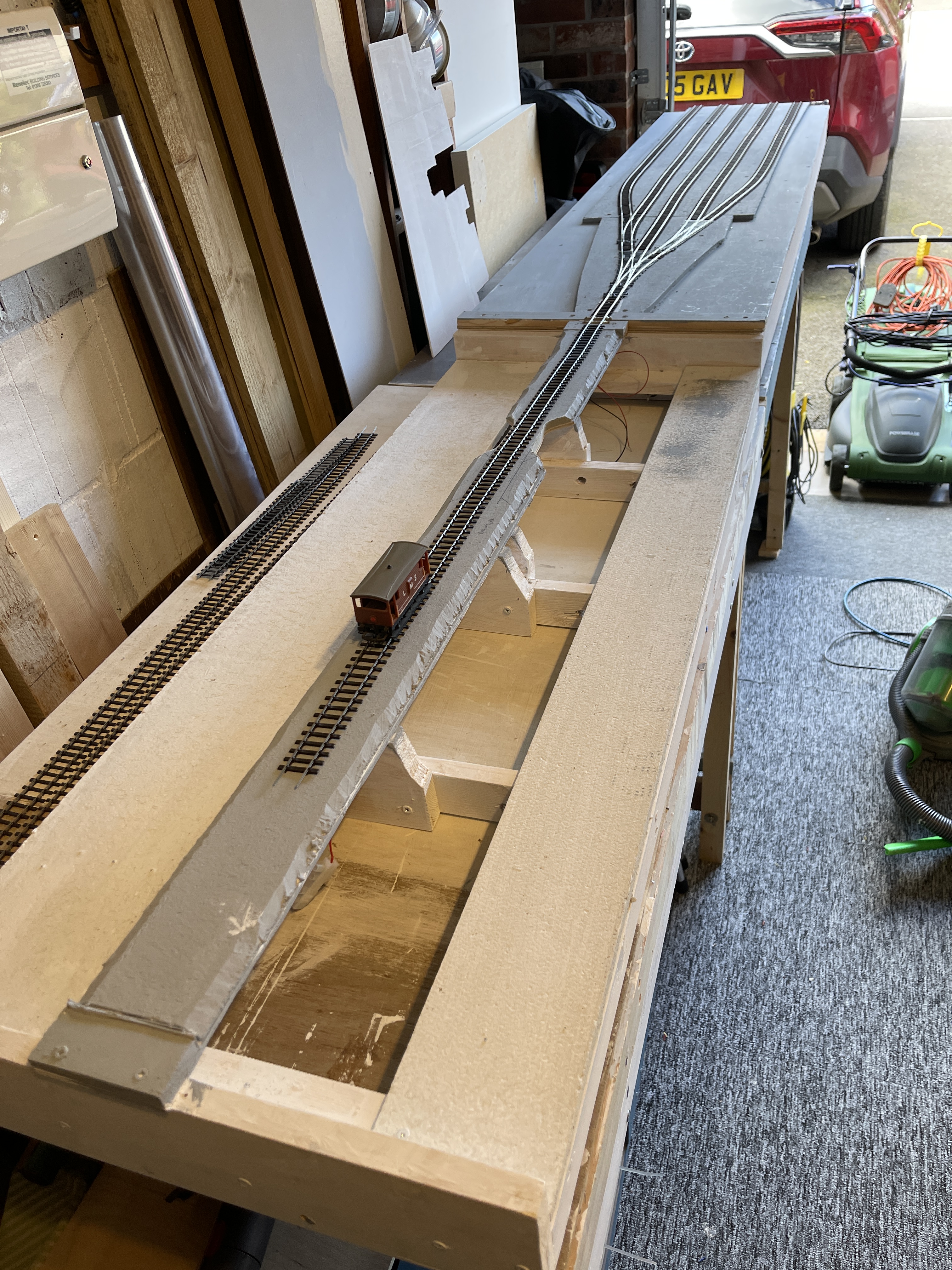

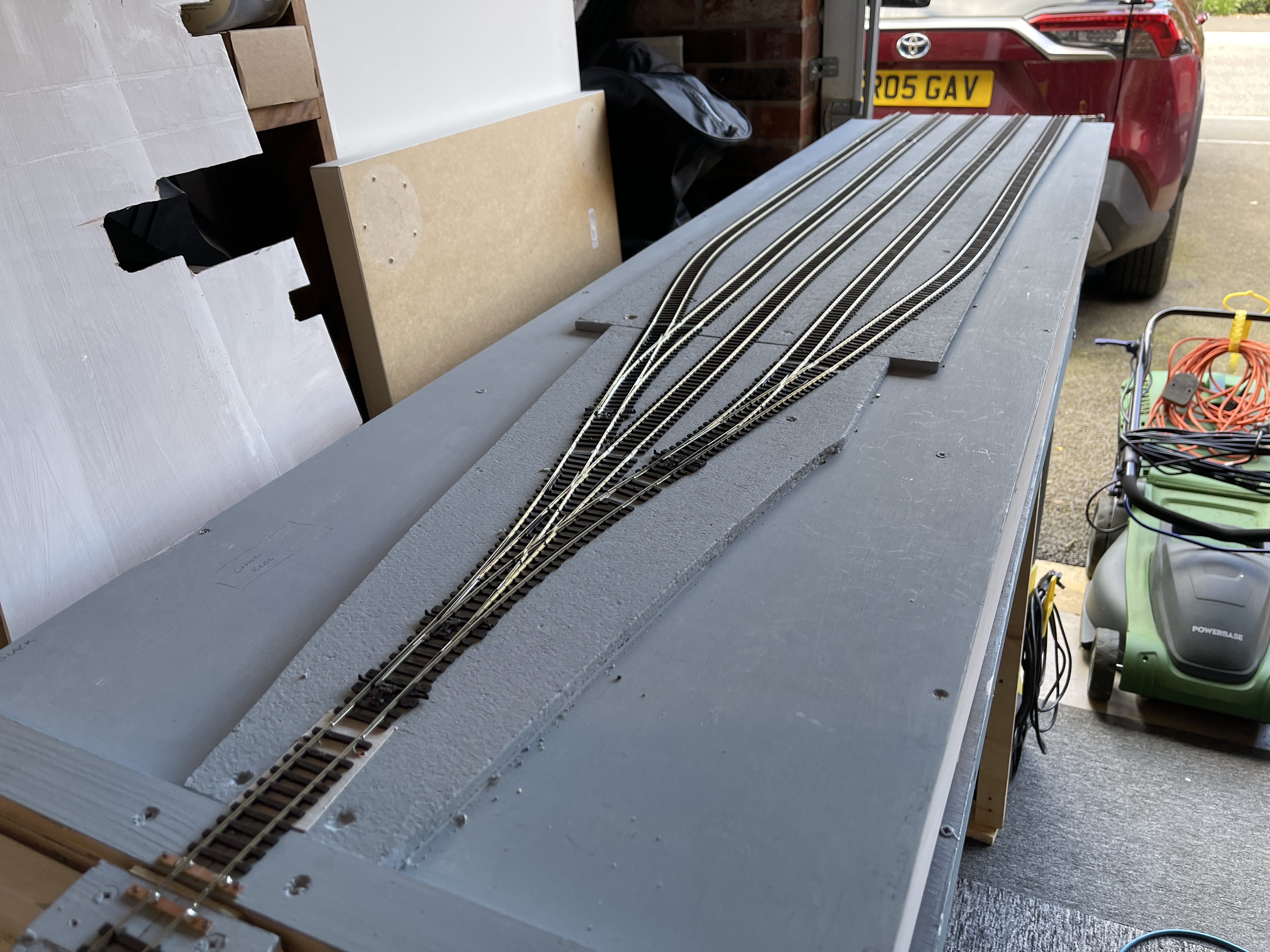



The track base was formed from a 6mm supported ply base covered in Sundaela strip for the track bed and shoulder. This allows for the track/cess to be created and lifts the track from the ground. The plaster was all painted green and brown depending on the final covering and to deal with the tracks under the bridges and then covered in flocks with details being added at the end.
Operation
The Layout is operated by DCC and currently utilises a Gaugemaster Prodigy Control Station, Wireless handsets, and a connection to JMRI which provides a panel for route setup and point control and a WiFi service to allow control from connected Apple and Android devices to the configured Train Rosta which includes a picture of each locomotive and the sound control mapping for the sound fitted locomotives
Operations are kept fairly simple for exhibiting. The trains are formed up in the fiddle yard into predefined sets, and when the signals and route are set the operator can drive into the station and hold the train at the starter signal or if clear drive all the way through to the other fiddle yard. Alternatively, the train is left in the station and pulled through by the receiving operator. Shunting can also take place in the yard but this is limited due to the compression on the layout and the very frequent service on the main line.
Work in Progress and on Show



